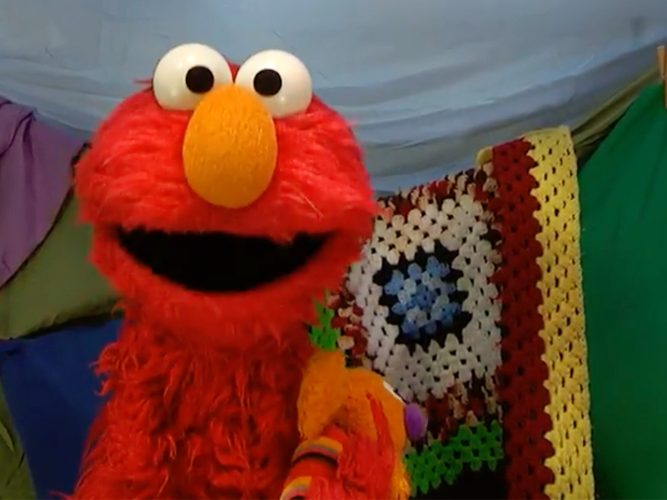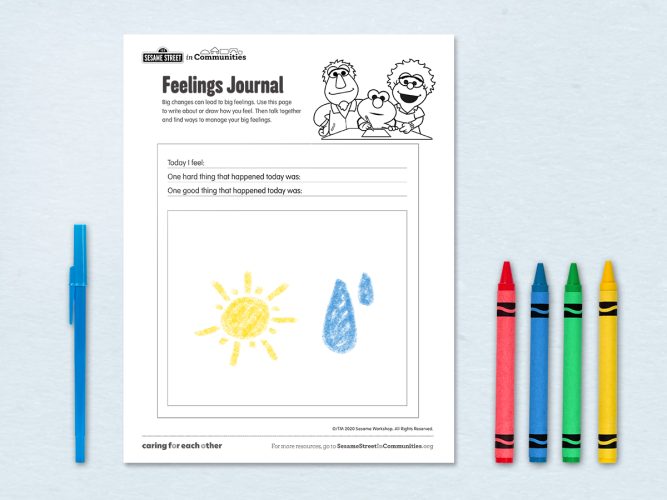
We Can Communicate Our Feelings
Big changes—even positive, exciting adventures—mean big feelings, too. Talking about our feelings can help us better manage them and build resilience.
Big changes like going back to school can bring big feelings, too. When you help children express and understand their emotions, you’re helping set them up for success in so many ways. And when you communicate about your feelings as a family, you can work to overcome problems, strengthen relationships, and just have fun together. In simple everyday ways, your family can learn to handle feelings, big and small.
Naming our feelings
Before we can talk about our feelings, it helps to know what they’re called. You can do activities together to help young children identify different emotions.
- Look at people in photo albums, magazines, or books. Notice facial expressions and body language. Ask, “what do you think she’s feeling?”
- Use your facial expressions and body language to play feelings charades. Act out different feelings and take turns guessing.
- Keep a list of words that describe feelings on the fridge. When children learn new words, add them to the list!
It can be hard for adults to know what our feelings are called, too! Especially in times like these, when so much is happening to and around us, it’s important to be intentional about noticing and naming our own feelings. Sesame Street advisor and professor of psychiatry Dr. Stephen J. Cozza encourages parents to try to first understand how they think and feel, and then help kids. He offers some other great insights and advice in this webinar for parents.
Communicating with each other
Talking together is one way to help kids manage their feelings. Help your child feel comfortable coming to you with his big feelings by reassuring him often that you love and care about him. Remind him that your family is a team, and a team works best by talking and listening a lot. You might begin conversations by telling him about your own feelings and how you’re trying to manage them. Say, “I’m feeling frustrated, so I’m going to stretch my body for five minutes. Do you want to stretch with me?”
Try these other feelings-friendly phrases, too:
- Feelings come and go.
- It’s okay to feel _______. Everyone feels _______ sometimes.
- How big is your feeling? What color is it? What shape?
- You can have many feelings at the same time.
- When I feel ______, I like to (draw a picture, read a book, listen to music, take a walk, etc.).
Many ways to manage
When you talk together with your child about her big feelings, you provide a secure foundation for her to overcome challenges. You can give her even more tools to help her express and manage her big feelings. Try these ideas:
- Listen to, play, or sing your favorite song.
- Create a calm-down glitter bottle.
- Draw a picture.
- Snuggle with a comfort item.
- Give yourself a hug.
- Keep a feelings journal.
- Take a few deep belly breaths.
- Imagine a safe space.
- Talk to a friend.
- Read a book.
- Move your body—exercise, stretch, or dance!
- Practice positive self-talk.
Remember that we each have our own preferences when it comes to self-expression. And we can try different strategies depending on how big our feeling is. It’s okay to mix it up and try new things.


